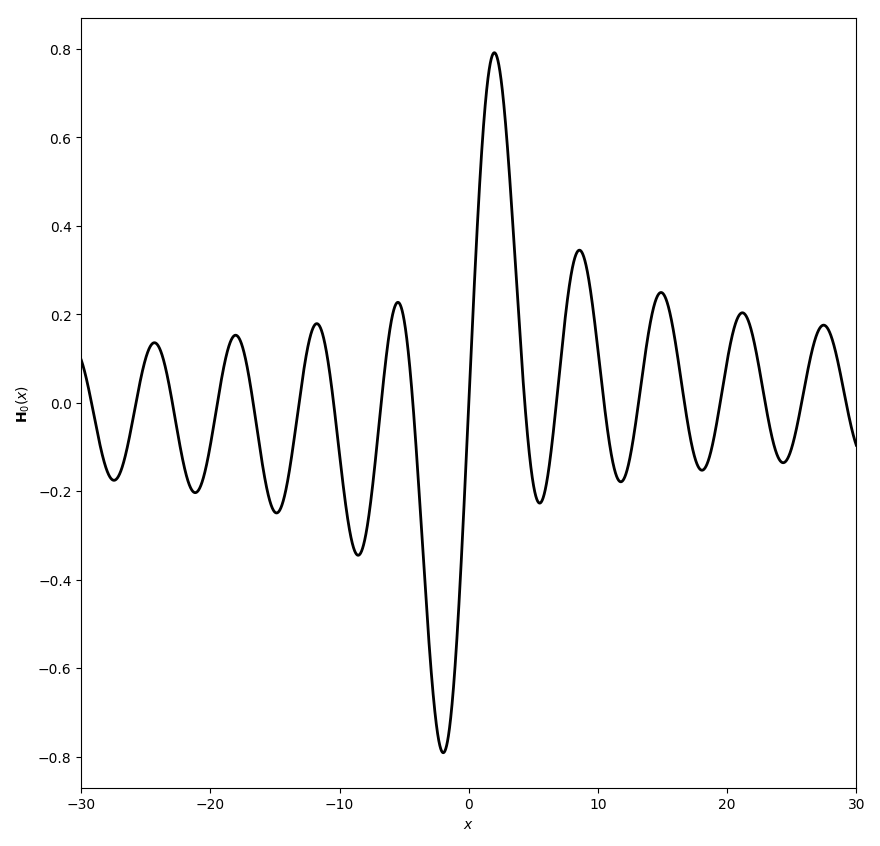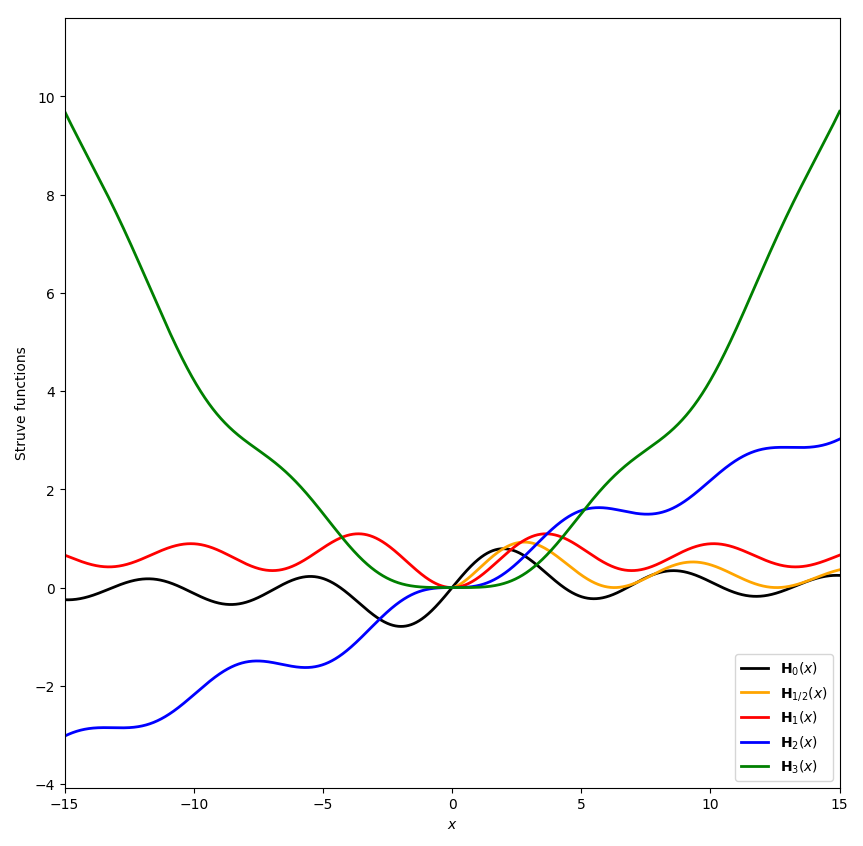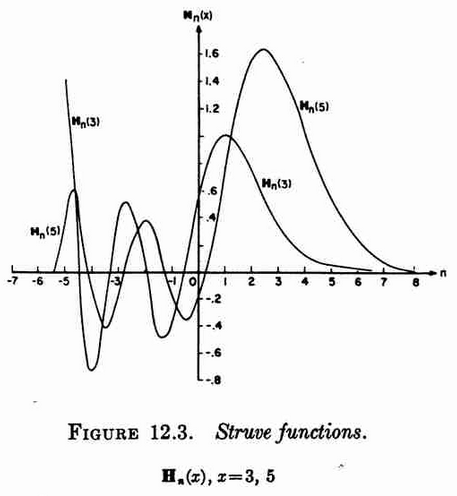Difference between revisions of "Struve function"
From specialfunctionswiki
| Line 15: | Line 15: | ||
[[Relationship between Weber function 0 and Struve function 0]]<br /> | [[Relationship between Weber function 0 and Struve function 0]]<br /> | ||
[[Relationship between Weber function 1 and Struve function 1]]<br /> | [[Relationship between Weber function 1 and Struve function 1]]<br /> | ||
| + | [[Integral representation of Struve function]]<br /> | ||
| + | [[Integral representation of Struve function (2)]]<br /> | ||
| + | [[Integral representation of Struve function (3)]]<br /> | ||
| + | [[Recurrence relation for Struve fuction]]<br /> | ||
| + | [[Recurrence relation for Struve function (2)]]<br /> | ||
| + | [[Derivative of Struve H0]]<br /> | ||
=References= | =References= | ||
Revision as of 19:55, 4 November 2017
The Struve functions are defined by $$\mathbf{H}_{\nu}(z)=\left(\dfrac{z}{2}\right)^{\nu+1} \displaystyle\sum_{k=0}^{\infty} \dfrac{(-1)^k\left(\frac{z}{2}\right)^{2k}}{\Gamma(k+\frac{3}{2})\Gamma \left(k+\nu+\frac{3}{2} \right)}.$$
Properties
Relationship between Struve function and hypergeometric pFq
Relationship between Weber function 0 and Struve function 0
Relationship between Weber function 1 and Struve function 1
Integral representation of Struve function
Integral representation of Struve function (2)
Integral representation of Struve function (3)
Recurrence relation for Struve fuction
Recurrence relation for Struve function (2)
Derivative of Struve H0
References
- 1964: Milton Abramowitz and Irene A. Stegun: Handbook of mathematical functions ... (previous) ... (next): $12.1.3$


